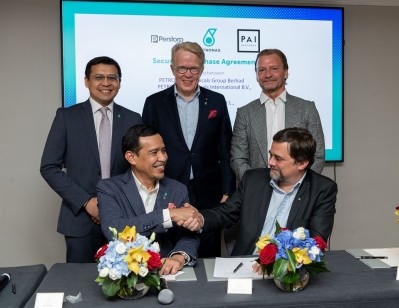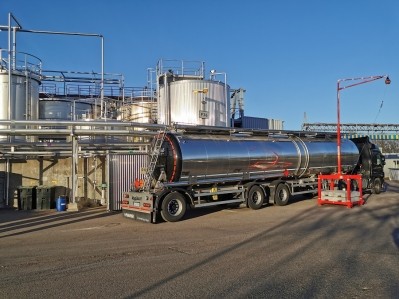Reports from EuroTier 2018
Perstorp Group sees huge growth opportunities in feed

That announcement followed the statement in February this year that the Feed & Food division was to become a separate business area within Perstorp.
At EuroTier, we caught up with Roger Mann, who was recently appointed executive vice president of that business area, to hear more about the restructuring.
“For Perstorp, there was a realization that the feed and food business was an area that the company needed to put more focus into and to invest in because of the macro dynamics it addresses," he told us.
Those macro trends, he said, refer to accelerating global population growth, with forecasts of 8.6 billion people on the planet by 2030, and the fact that antibiotics in the food chain are no longer acceptable to consumers, as well as the fact that people in countries like India, Indonesia, and China have more money to spend on food and dining out, that GDP in those markets is constantly increasing.
As a result, there were internal changes made in the company, in terms of where the Feed & Food business now sits, said Mann.
“It [the Feed & Food division] now reports directly into the CEO along with the two big industrial businesses that we have. Previously, Feed & Food used to sit underneath one of the industrial business areas. So it has been elevated, and hence we have been given a mandate now to invest. We have a seat at the top table.”
Expansion strategy
The expansion strategy for the company’s Feed & Food business is predicated on the increasing shift away from the use of antibiotics in farmed animal production globally:
“Take the largest market in the world for chicken production – the US – 18.3 million metric tons of chicken per year. Four years ago, less than 5% of that production was No Antibiotics Ever (NAE). However, the statistics from the US now show around 55% of total poultry production is NAE. That change in only four-five years is just incredibly fast. The major multiples - fast food [giants] and others – have been the drivers behind that.
“Biosecurity is not strong in the US because they use chlorine dips in processing. We do not in Europe, and so salmonella scares are more prevalent in the US than perhaps they are in Europe. So, companies in the US market are crying out for viable alternative solutions, and there is no single silver bullet, but it may be a combination of some intervention [with several products] to enable them to stabilize and maximize their production."
Up until now, Perstorp has been a European centric business:
"Some 75% of revenues for the Feed & Food division are European based. However, a lot of investment is now going to go into Asia Pacific and into the Americas, in marketing, supply chain and sales resources. We are also potentially looking at satellite production units in those two territories as well to be closer to the market and our customer base.”
Malaysia would be a good location, logistics wise, to serve ASEAN-10, he said. A production unit in the US could potentially be located down south where the country’s chicken belt is, and where a significant proportion of US swine production is located, added Mann.
“Ideally, there would be easy access to a major port to allow us bring in specialist raw materials if needed, and then we would source the more commoditized raw materials locally.”
Perstorp sources a lot of its raw materials for its Feed & Food divison from its own asset base, co-products from the industrial part of its business. In terms of the Americas and Asia Pacific regions, it has a chemical plant in the US and another in China.
“We are vertically integrated, unlike lots of other feed additive companies that just simply buy the ingredients and blend them. That gives us security of supply and quality, a unique point of difference.”
Esterification of acids
He said esterification of acids is a key area of interest for Perstorp. “Esterification of acids is not new but we have 137 years of chemical engineering knowledge in our business, not in the feed and food division, but in the other part of our business; it is about using that sort of knowledge to create some key points of difference in our esterification processes compared to the rest of the market.”
Aquaculture is one area of focus in terms of esters and the company has commissioned research externally, with some universities, in this regard, he added.
An ester is a combination of an acid (carbonic acid) and an alcohol (hydroxyl-group). Esters are stable due to a “strong” covalent bond in an acid environment. The function of esters are: flavor, aroma/perfumes, anti-fungal and anti-bacterial.














